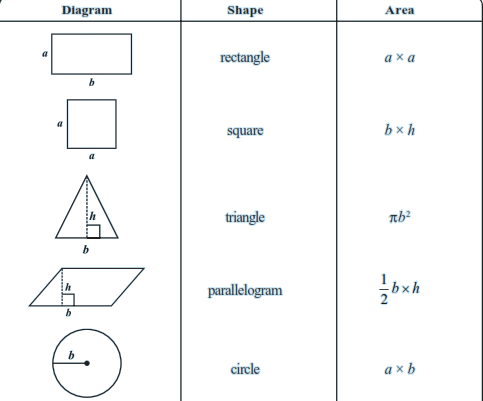Compound Interest
- Simple interest = ( Principal * Annual Interest Rate * Time in years) / 100
- Amount = Principal + S.I.
- For Compound interest: Amount = P(1 + R/100) n
- Compound interest = Amount - Principal
- If interest rate is compounded half yearly then Amount = P(1 + (R/2)/100) 2n
- The above formula shows that rate of interest is halved and time period is doubled.
Compound Interest Questions
Q. Find CI paid when a sum of Rs 10,000 is invested for 1 year and 3 months at 8 and 1/2% per annum compounded annually.
Ans.Find the amount for the whole part, i.e., 1 year in this case. Then use this as principal to get simple interest for for 1/4 year more
A = 10000(1+17/200)1
A = 10850
For next three months calculate Simple interest: SI = 10850*(17/2)*(1/4) / 100
SI = 230.56
Q.The population of a city was 20,000 in the year 1997. It increased at the rate of 5% p.a. Find the population at the end of the year 2000.
Ans.Use compound interest formula with P = 20000, R = 5 and n=3. The amount = 23153.
Q.A TV was bought at a price of Rs 21,000. After one year the value of the TV was depreciated by 5% (Depreciation means reduction of value due to use and age of the item). Find the value of the TV after one year.
Ans.Use compound interest formula with P = 21000, R = -5 and n=3. The amount = 19950. Negative sign in interest is for decrease.
Identity Formulae
- (a+b)2 = a2+2ab+b2
- (a-b)2 = a2 - 2ab + b2
- (a+b)(a-b) = a2 - b2
- (x+a)(x+b) = x2 + (a+b)x + ab
Identity Formulae - Solved examples
Q.501 × 502
Ans.Solve as (500+1)(500+2) i.e. (x+a)(x+b) = x2 + (a+b)x + ab
Q.95 × 103
Ans.Solve as (100-5)(100+3) i.e. (x+a)(x+b) = x2 + (a+b)x + ab
Mensuration
- Eulers Formula = ‘V’ stands for number of vertices, ‘F’ stands for number of faces and ‘E’ stands for number of edges
- F + V – E = 2
- Area of trapezium = (height) * (sum of parallel sides) / 2
- Area of a rhombus is half the product of its diagonals
- Surface Area of a cuboid = 2(lb + bh + hl )
- The side walls (the faces excluding the top and bottom) make the lateral surface area of the cuboid = 2h (l + b)
- Total surface area of cuboid = lateral surface area + 2 × area of base
- Total surface area of a cube of side l is 6l2
- Lateral (or curved) surface area of a cylinder is 2πrh. lateral surface area of a cylinder is the circumference of base × height of cylinder.
- Total surface area of a cylinder = 2πr (r + h)
- Volume of cuboid = l × b × h . Volume of cuboid = area of the base × height
- Volume of cube = l × l × l = l 3
- Volume of cylinder = area of base × height = πr2h
- 1 mL = 1 cm3 ,1 L = 1000 cm 3 . Thus, 1 m 3 = 1000000 cm = 1000 L

Ratio and Proportions
- x and y are in direct proportion, if x/y = k or x = k*y
- When x and y are in direct proportion (x1/y1) = (x2/y2) . y1, y2 are values of y corresponding to x1 , x2
- Two quantities x and y are said to vary in inverse proportion, if there exists a relation of the type xy = k between them, k being a constant. If y1 , y2 corresponding to the values x1 , x2 then x1 * y1 = x2* y2(= k)